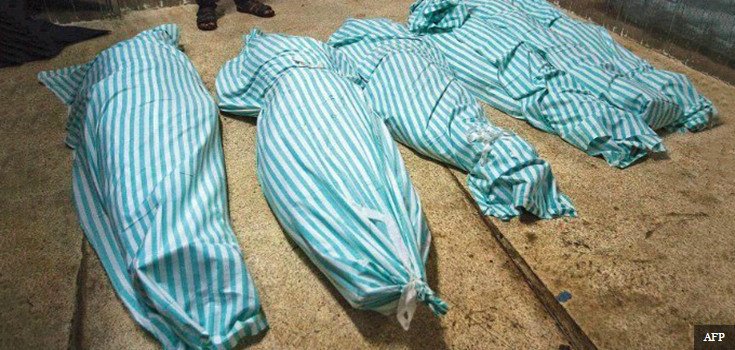Corpses in the Streets of Syria are Spreading Flesh-Eating Bug

DAESH has been dumping rotting corpses in the streets of Syria, and now a flesh-eating bug is spreading across the country.
Human rights workers from the Kurdish Red Crescent say more than 500 cases of Leishmaniasis disease have been reported in Syria in the past 12 months. The disease is spread by a particular species of parasite-carrying sandfly. [1]
According to the U.S. Centers for Disease Control and Prevention (CDC), phlebotomine sand flies, just a third of the size of a mosquito, spread the potentially deadly bacteria. In addition to large open wounds, Leishmaniasis can also affect internal organs such as the liver, spleen, and bone marrow. This form of the disease, known as visceral Leishmaniasis, is usually deadly, but the cutaneous form of the disease is more common in Syria. Survivors are typically left with disfiguring scars.
Mucocutaneous Leishmaniasis is the most deadly form of the disease, and it eats away at the mucous membranes of the nose, mouth and throat.
In a weird twist of fate, Leishmaniasis isn’t just infecting innocent Syrians, it’s also striking ISIS fighters (who are causing the disease to spread). Large numbers of the terrorists have reportedly been infected with the disease and are sporting the telltale wounds that can kill if left untreated.
Most ISIS fighters have been refusing medical treatment for the flesh-eating bug, which has only accelerated the spread of the disease. [2]
“As a result of abominable acts by ISIS that included the killing of innocent people and dumping their corpses in streets, this is the leading factor behind the rapid spread of Leishmaniasis disease,” said the Red Crescent’s Dilqash Isa.
The disease didn’t pop up in Syria until the arrival of DAESH, according to another Kurd deployed in the country, who cited Tal Hamis, Hon, and Qosa as sources of the bug.

The first case of Leishmaniasis was reported in September 2013. By the middle of the following year, 500 people had been infected.
Voice of America reported in 2013 on the growing scourge of Leishmaniasis in Syria, which has been nicknamed “Aleppo Button Disease” because of its distinctive sores, linking crumbling health services, insect spraying and poor hygiene with the spread of the disease. It was made even more dangerous because of the Syrian civil war. Malnourished children with weakened immune systems are especially susceptible to infection.
Then, in October 2014, the CDC reported an outbreak of Leishmaniasis among Syrian refugees in Lebanon. More recently, outbreaks have been reported in residents of ISIS-occupied Syrian cities, as well as among Syrian Army forces battling in Palmyra. The disease was spreading so rapidly, according to ARA News, that it “threatened unit cohesion.” [3]
With any luck, Leismaniasis will wipe out ISIS in Syria.
Sources:
[1] Daily Mail
[2] WND Health
[3] Breitbart
